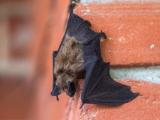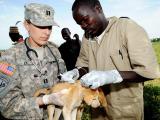Sep 19, 2012
Sanofi redirecting requests for human rabies immune globulin
Sanofi Pasteur is temporarily unable to fill orders for Imogam, its human rabies immune globulin, and is directing requests for the product to Grifols/Talecris Biotherapeutics, which supplies the HyperRAB brand of human rabies immune globulin, the US Centers for Disease Control and Prevention (CDC) said today. The agency stopped short of calling the situation a shortage, describing it as a "supply constraint." It said Grifols/Talecris is expected to meet the demand for the product until more lots of Imogam are available from Sanofi in late November. The problem doesn't affect patient-care recommendations and human rabies immune globulin is still available, the CDC added. Regarding temporary shortages of rabies vaccine, the situation has not changed since the CDC's last update on Sep 11. Rabies vaccine for preexposure use is in limited supply from Novartis and Sanofi Pasteur, but health providers can get RabAvert, made by Novartis, from wholesale distributors. So far there are no limits on rabies vaccine for postexposure prophylaxis (PEP), and Sanofi is still able to send vaccine for patients with documented rabies exposure. The vaccine supply is expected to improve when new lots are cleared in coming weeks and months.
Sep 19 CDC rabies immune globulin update
Sep 13 CIDRAP News story "Tight rabies vaccine supply prompts health alerts"
FDA awards contract for tools to analyze food pathogen genomes
The US Food and Drug Administration (FDA) yesterday awarded a contract to Illumina Inc., of San Diego, for technology it hopes will speed pathogen identification on produce, the company said in a news release. The funding is for Illumina to provide the FDA with its MiSeq sequencing systems and reagents for conducting whole-genome analyses of Salmonella and Shiga-toxin–producing Escherichia coli isolates from produce and produce-related environmental samples. The contract is worth up to $17 million over 5 years. The FDA already deploys several MiSeq systems, but the new award is to enhance its ability to conduct whole-genome analysis and collect data crucial for tracking the sources of Salmonella in produce-related outbreaks. Using MiSeq, FDA and state laboratories will be able to generate whole-genome sequences from historical pathogen collections and from bacteria collected from produce, the release said.
Sep 18 Illumina news release
Companies win NIH grant to develop tandem malaria vaccines
Two companies, Protein Potential LLC and Aduro BioTech Inc., announced today that they have been awarded a National Institutes of Health (NIH) grant to develop two malaria vaccines that will be administered sequentially with the aim of inducing long-lasting protection. Both vaccines stimulate immune responses that target the circumsporozoite protein (CSP) antigen of Plasmodium falciparum, the companies said in a joint press release. Protein Potential, of Rockville, Md., the project leader, will use its expertise in producing recombinant proteins to make CSP that can be combined with one or more adjuvants. Aduro, of Berkeley, Calif., will use its platform technology based on live-attenuated Listeria monocytogenes to engineer a strain that expresses recombinant CSP. Together, the vaccines will stimulate both humoral and cellular immune responses. The goal is to develop a prime-boost regimen that targets more than one P falciparum strain to be tested in human clinical trials. "The novel regimen is designed to induce the spectrum of immune responses that is believed to be essential for long-lasting protection against malaria," the companies said. Protein Potential spokesman Adam Richman, PhD, said the grant, a Phase 1 Small Business Innovation Research (SBIR) award, is worth $300,000 per year for 2 years, spanning July 2012 through June 2014.
Sep 19 joint press release
NIH information about the SBIR program
ECDC report profiles tickborne encephalitis patterns
The European Centre for Disease Prevention and Control (ECDC) yesterday published its first major report on the prevalence of tickborne encephalitis (TBE) in Europe from 2000 to 2010, a move intended to build support for harmonizing TBE surveillance and increase prevention efforts. TBE is endemic across large parts of Europe and Asia, and the virus causes thousands of cases of neuroinvasive disease in Europe each year. The report includes data from 20 of 30 countries in the region and highlights key risk areas, seasonal peaks, and groups at risk, the ECDC said in a press release. The main risk areas are the Nordic and Baltic countries, eastern and central Europe, and southern Europe, including northern Italy and the Balkans. Men ages 40 to 60, particularly those who work outdoors, may be at increased risk for the disease, which peaks seasonally from June to October. In 16 countries reporting TBE case data, the annual numbers were relatively stable over the decade, ranging from about 1,900 to 2,630, with notable increases in 2003, 2006, 2009, and 2010. The new report follows a Sep 5 European Commission decision to add TBE to the list of notifiable diseases. ECDC Director Marc Sprenger, MD, PhD, said in the press release that TBE prevalence should be lower, considering that vaccines against the disease are safe and protective.
Sep 18 ECDC press release















